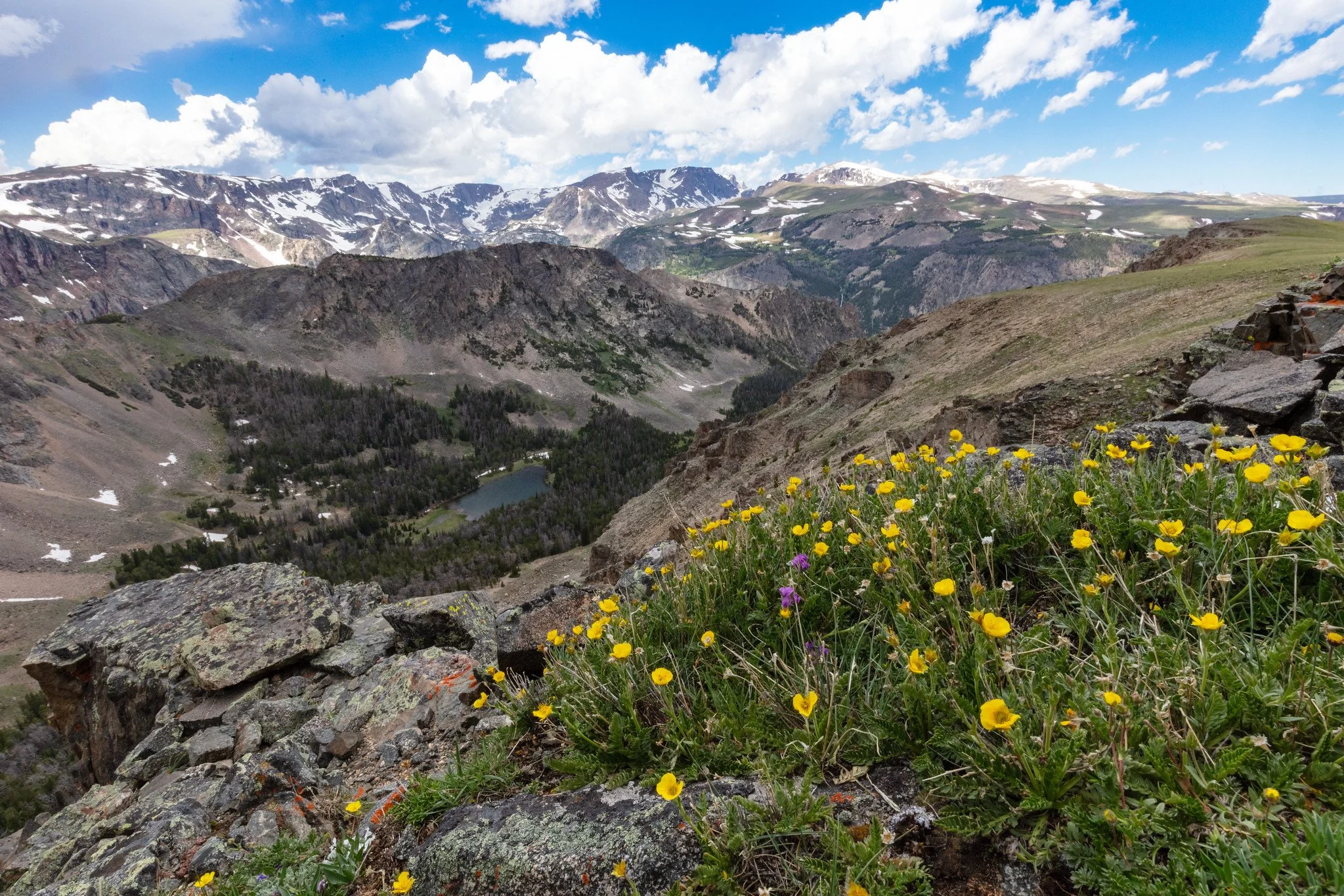Apsáalooke place names in Greater Yellowstone
Since time immemorial, the Greater Yellowstone Ecosystem has been stewarded by Indigenous Peoples who view its lands, waters, and wildlife as sacred. The Indigenous way of caring for the land acknowledges its life-giving energy, is centered on reciprocity, and uses Traditional Ecological Knowledge to keep the ecosystem in balance. Today, over 49 Tribes are keepers of this knowledge and retain deep connections to this remarkable place.
In honor of Indigenous Peoples’ Day, we are sharing the place names of beloved rivers, mountains, and other natural areas throughout the Greater Yellowstone Ecosystem. The Apsáalooke/Crow people and their ancestors bestowed the following names, and we encourage you to use and share this knowledge as you explore the Greater Yellowstone Ecosystem.
Yellowstone River - Iichíilikaashaashe or “Elk River”
The mighty Iichíilikaashaashe flows from its headwaters high in the mountains of Wyoming, across Montana, to its confluence with the Missouri River in North Dakota. As the longest free-flowing, undammed river in the United States, this iconic river can be seen at the roaring Upper and Lower Falls of the Yellowstone in the park and winding through the beautiful Paradise Valley. The Apsáalooke often lived in close proximity to Iichíilikaashaashe and hunted elk as they migrated along the river.
Beartooth Mountains – Daxpitcheeihté or “Bear’s Teeth”
Cinquefoil on an alpine ridge overlooking the Daxpitcheeihté. (Photo NPS/Jacob W. Frank)
Nestled in south-central Montana and just northeast of Yellowstone National Park, the Daxpitcheeihté are home to many of the highest peaks in the state. If you’ve ever driven the wildly scenic Beartooth Highway, you know what makes this mountain range spectacular. The Daxpitcheeihté are spiritually profound to the Apsáalooke. Dr. Shane Doyle recently wrote in Mountain Journal about how the U.S. Government took the Daxpitcheeihté from the Apsáalooke in the 1851 and 1868 Fort Laramie Treaties.
Area near Lander, Wyoming – Ammitaalashé or “Home At The Edge”
Ammitaalashé is located on the southern edge of the Greater Yellowstone Ecosystem (and also home to one of the Greater Yellowstone Coalition’s field offices). Some notable sites near Ammitaalashé include the Shoshone National Forest, the first federally protected national forest in the U.S., and the rugged Wind River Mountains. Ammitaalashé is the name of an Apsáalooke band that resided in the area. The original homeland of this band is on the western edge of the historic Apsáalooke Country.
Madison River – Aashalatatche or “Where The River Is Straight”
The Aashalatatche at the All Nations Teepee Village from the Yellowstone Revealed event in August 2022. (Photo GYC/Emmy Reed)
Originating in Yellowstone National Park, the Aashalatatche in Montana is a hotbed of outdoor recreation. On almost any day you’ll see someone out fly-fishing, rafting, floating, or camping. At the Yellowstone Revealed event in August 2022, an All Nations Teepee Village resided next to the Aashalatatche banks at Madison Junction, evoking an image of Yellowstone before Indigenous Peoples were forcibly removed from the park.
Yellowstone Lake – Iichíilikaashaashe Alachiliche or “Where Elk River Begins” and Bilichké or “Lake”
The largest high-elevation lake in North America, Iichíilikaashaashe Alachiliche drains into the Iichíilikaashaashe or Elk River (Yellowstone River). The lake is a geological wonder with hot springs, volcanic vents, underwater geysers, and fumaroles all found within its depths. Iichíilikaashaashe Alachiliche is the location of one of the most interesting conservation efforts in Greater Yellowstone, where scientists are trying to rid the lake of the invasive lake trout that threaten the native Yellowstone cutthroat trout. The Apsáalooke say the steam vents around Iichíilikaashaashe Alachiliche were formed when an Apsáalooke man heated rocks and water and threw them into the mouth of a massive water beast to protect the Thunderbird and its nest.
SOURCES:
The Apsáalooke Place Names Database on the Little Big Horn College Library
Nabokov, P., & Loendorf, L. (2016). Restoring a Presence: American Indians and Yellowstone National Park. University of Oklahoma Press.
Any thoughts or corrections? Reach out to Senior Digital Communications Associate Emmy Reed at ereed@greateryellowstone.org.


